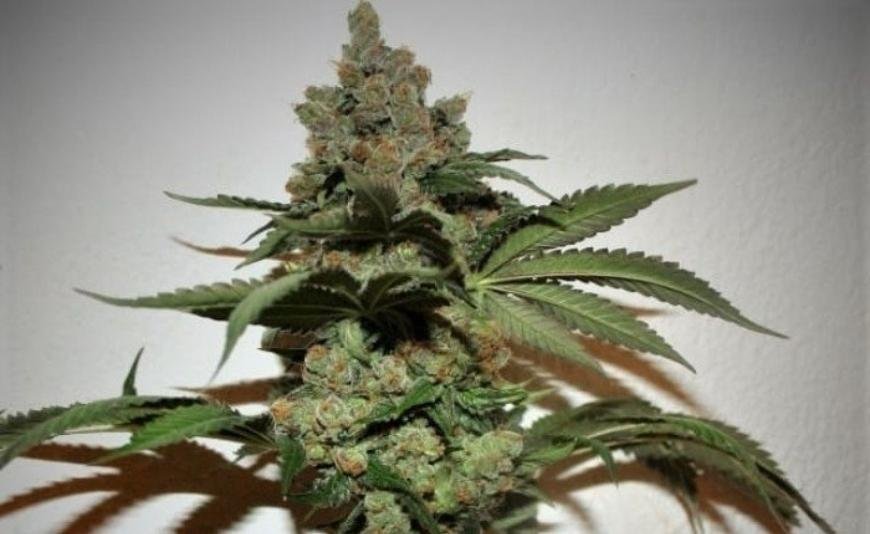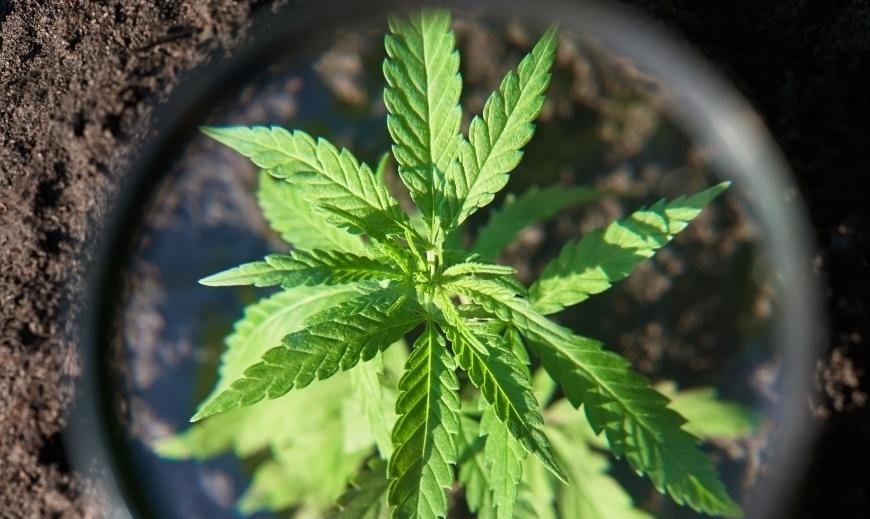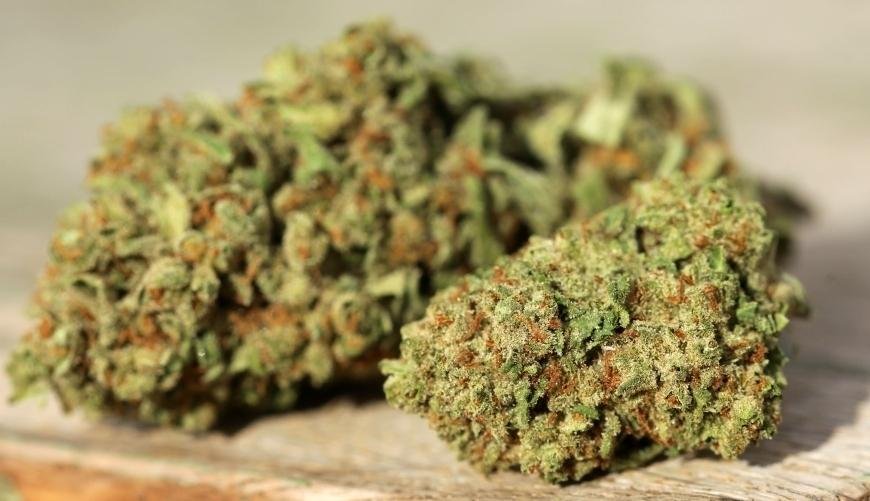Grape Gas Strain
The Grape Gas Strain, a flavorful hybrid with potent effects. Uncover its history, genetics, growing tips, and cannabinoid levels here.

Delving into the world of cannabis, one cannot overlook the fascinating Grape Gas strain. This unique and potent hybrid has been making waves in the recreational cannabis community, particularly among young adults. In this blog post, we will explore various aspects of this intriguing strain.
We'll begin with a brief overview and history to understand its origins better. Then, we'll dive into its genetics and lineage that contribute to its distinct characteristics. As many enthusiasts are interested in growing their own plants, our discussion will also cover essential tips for cultivating successfully.
Furthermore, we will examine THC, CBD, and other cannabinoid levels present in this strain which contribute to its effects on users. We'll also discuss those effects in detail so you can have a comprehensive understanding of what to expect from using Grape Gas Strain. Finally, no exploration would be complete without mentioning the flavor profile that makes it stand out among other strains.
Table of Contents:
- Overview of Grape Gas Strain
- History of Grape Gas Strain
- Genetics and Lineage of Grape Gas Strain
- Growing of Grape Gas Strain
- THC, CBD and other Cannabinoid Levels
- Effects of Grape Gas Strain
- Flavor of Grape Gas Strain
- Frequently Asked Questions Grape Gas Strain
- Conclusion
Overview of Grape Gas Strain
The Grape Gas #7 strain is an indica-dominant hybrid that has gained popularity among cannabis enthusiasts for its unique combination of flavors, potent effects, and rich terpene profile. This strain boasts a THC content of 21% and CBG levels at 1%, making it suitable for both casual users and experienced consumers alike. In this section, we will delve into the characteristics that make it stand out from other strains.
It features a distinct aroma that combines the sweet scent of grapes with pungent diesel undertones. This enticing fragrance is attributed to its dominant terpene, myrcene, which contributes to the overall sensory experience when consuming this strain. The buds are dense with dark green hues interlaced with purple accents and covered in frosty trichomes.
This versatile strain can be enjoyed in various settings due to its balanced effects on both mind and body. It's perfect for unwinding after a long day at work or enhancing your mood before attending social events.
Grape Gas Strain is a popular and powerful strain of cannabis that has become increasingly sought after due to its unique flavor profile and potency. With this in mind, it's important to understand the history in order to better appreciate its qualities.
History of Grape Gas Strain
The history is an interesting one, with its roots tracing back to some well-known and highly regarded cannabis strains. As a result, this indica-dominant hybrid has quickly gained popularity among recreational growers and users alike.
It was developed by True Canna Genetics, a renowned breeder in the cannabis industry known for creating unique and potent strains. The breeders aimed to create a strain that would combine the best traits from both parent plants - Purple Halitosis and The One - resulting in a powerful yet balanced experience for users.
Genetics and Lineage of Grape Gas Strain
The Grape Gas strain is a remarkable indica-dominant hybrid that boasts an impressive genetic lineage. This potent strain was created by the skilled breeders at True Canna Genetics, who expertly crossed two popular strains: Purple Halitosis and The One. The end product of this cross-breeding is a cannabis strain that offers an exciting blend of scents, tastes, and effects.
Purple Halitosis is known for its distinct grape-like flavor profile, which it passes on to its offspring in the form of Grape Gas. This flavorful parent strain also contributes to the high THC levels found in Grape Gas #7, making it a sought-after choice among recreational users looking for both taste and potency.
The other half of Grape Gas's genetic makeup comes from The One - a legendary cannabis strain renowned for its powerful effects. By combining this potent powerhouse with Purple Halitosis's delicious flavors, True Canna Genetics has crafted an exceptional hybrid that appeals to both casual consumers and experienced connoisseurs alike.
the rich genetic lineage sets it apart from other cannabis varieties on the market today. With its unique combination of flavorful parent strains Purple Halitosis and The One, as well as its dominant myrcene terpene profile, it offers users an unforgettable experience that's both enjoyable and effective.
The Grape Gas strain is an Indica-dominant hybrid, with a lineage that includes Chemdawg, Jet fuel gelato and Sour Diesel. With its strong genetics in mind, it's time to look at how best to grow this popular cannabis strain.

Growing of Grape Gas Strain
When it comes to growing the Grape Gas strain, both novice and experienced cultivators can achieve success with proper care and attention. This section will provide information on the best practices for growing this indica-dominant hybrid, ensuring a bountiful harvest.
It can be grown both indoors and outdoors. However, indoor cultivation is recommended due to its susceptibility to mold and mildew when exposed to excessive moisture. By controlling humidity levels in an indoor garden setup, you can prevent these issues from affecting your plants.
The Grape Gas strain thrives in well-draining soil that's rich in organic matter. It's essential to use a balanced nutrient mix specifically designed for cannabis plants throughout their life cycle. Periodically inspect the pH level of your dirt, aiming for a range in between 6.0 and 7.0 to guarantee ideal nutrient absorption.
To maximize yield and encourage even growth, consider implementing training techniques such as topping, Low-Stress Training (LST), or the Screen of Green (ScrOG) method. These methods promote better light penetration and airflow throughout the plant canopy while also helping to control its height.
It has an average flowering time of about 8-9 weeks when grown indoors. When cultivating outdoors, expect harvest time around mid-October in Northern Hemisphere climates. To determine if your plants are ready for harvest, closely examine their trichomes using a magnifying glass - they should appear milky white with hints of amber coloration. Once you've determined that it's time to harvest, carefully trim away excess foliage before drying and curing your buds for optimal flavor and potency.
The Grape Gas strain is an ideal choice for both novice and experienced growers due to its resilient nature and adaptability. This hybrid, which is predominantly indica-dominant, can be cultivated in a range of different circumstances including indoors, outdoors and even greenhouses. In this section, we will explore the best practices for growing Grape Gas #7.
THC, CBD and other Cannabinoid Levels
Grape Gas #7 is a potent strain that offers an ideal balance of cannabinoids for both casual and experienced cannabis consumers. The cannabinoid levels in this strain play a significant role in its effects, making it essential to understand their composition.
The primary psychoactive compound in Grape Gas #7 is THC, which clocks in at a potent 21% content. This strain boasts an impressive THC content of 21%, which contributes to its powerful cerebral effects. A high THC level can lead to increased creativity, euphoria, and relaxation when consumed responsibly.
Cannabidiol (CBD), another well-known cannabinoid present in cannabis plants, has gained popularity due to its potential therapeutic benefits without causing the "high" associated with THC. However, it contains only trace amounts of CBD - typically less than 1%. As such, users seeking strains with higher CBD content for medicinal purposes may want to explore other options.
In addition to THC and CBD, Grape Gas #7 also contains 1% cannabigerol (CBG). CBG is considered a minor cannabinoid but has been gaining attention for its potential health benefits such as reducing inflammation. Although the CBG concentration in this strain isn't very high compared to some others on the market today, it still contributes to the overall experience of consuming Grape Gas #7.
Beyond cannabinoids, terpenes also play a crucial role in defining the effects and flavors of cannabis strains. In Grape Gas #7, myrcene is the dominant terpene, which is known for its earthy aroma and potential relaxing properties. Other notable terpenes present in this strain include limonene and caryophyllene, contributing to its unique grape-like taste and diesel undertones.
In summary, it offers an impressive cannabinoid profile with high THC levels that contribute to its potent cerebral effects.
The THC, CBD and other cannabinoid levels in the Grape Gas Strain make it a powerful strain with intense effects. Let's delve deeper into the consequences this strain can bring.
Effects of Grape Gas Strain
It is known for its unique combination of effects, making it a popular choice among both casual and experienced cannabis consumers. With a THC content of 21% and CBG levels at 1%, users can expect to experience an array of sensations when consuming this indica-dominant hybrid.
One notable effect is the mood-enhancing properties that come with using it. Users often report feeling uplifted, talkative, and even aroused after consumption. This makes it an ideal choice for social gatherings or intimate settings where conversation flows freely.
In addition to its mood-boosting qualities, many users also find that Grape Gas #7 helps spark creativity and inspiration. The presence of myrcene as the dominant terpene in this strain may contribute to these creative effects due to its ability to promote relaxation while stimulating the mind. It's indica dominance lends itself well to providing pain relief and relaxation for those who consume it.
The Grape Gas strain offers a variety of effects, from relaxation to euphoria. This strain, boasting a high THC level, offers an intense and enduring experience for users. Moving on, let's explore the flavor profile of this unique strain.
Flavor of Grape Gas Strain
The flavor profile is a delightful combination that will entice both your taste buds and olfactory senses. This strain boasts a unique blend of grape, diesel, and chemical flavors that create an enjoyable smoking experience for recreational users.
The aroma is predominantly fruity with strong hints of sweet grapes. The myrcene terpene present in this strain contributes to its earthy undertones and subtle muskiness. As you break apart the buds, you'll notice a pungent diesel scent mixed with the sweetness from the grapes which adds complexity to its overall fragrance.
It offers a rich palate-pleasing experience as soon as it hits your tongue. The initial taste consists mainly of sweet grape flavors followed by notes reminiscent of diesel strains. These bold tastes are balanced out by subtle chemical undertones that give this cannabis variety its signature "gas" moniker.
- Sweet Grapes: A prominent feature in the flavor profile, giving it an almost candy-like quality.
- Diesel: Pungent and slightly bitter notes add depth to the overall taste experience.
- Chemical Undertones: Subtle yet noticeable elements provide balance between sweetness and bitterness while enhancing its distinctiveness among other strains on the market today.
In addition to these primary flavors, some users may also detect hints of citrus or berry depending on their individual palates. Regardless, most people agree that it is a delicious and unique strain that's worth trying for its intriguing taste alone.
If you're looking to enhance your experience, consider pairing it with complementary foods or beverages. For instance, the sweet grape flavors can be accentuated by sipping on a glass of red wine or enjoying some dark chocolate. On the other hand, if you want to highlight the diesel notes in this strain, try consuming it alongside strong cheeses like blue cheese or aged cheddar.

Frequently Asked Questions Grape Gas Strain
Is Grape Gas sativa?
Grape Gas is not a pure Sativa strain; it's a hybrid cannabis strain with both Indica and Sativa properties. The exact ratio of Indica to Sativa varies depending on the specific phenotype, but generally leans towards an Indica-dominant profile.
What lineage is grape gasoline?
The lineage can be traced back to its parent strains: Turbo Diesel and Fruit Loops. These two strains combine their genetics to create the unique flavor profile and potent effects that makes it so popular among users.
What strain is Gas Gas?
Gas Gas may refer to several different cannabis strains with "gas" in their names due to their pungent aroma or strong effects. Some examples include Motorbreath, Sour Diesel, and OG Kush. It's important to research each specific gas-related strain for accurate information on genetics and effects.
What is the most gassiest strain?
One of the gassiest cannabis strains available today is Sour Diesel. Known for its pungent diesel-like aroma combined with earthy undertones, this classic Sativa-dominant hybrid has become famous worldwide for its distinctive smell and energizing cerebral high.
Conclusion
In conclusion, the Grape Gas Strain is a popular choice among young adults who enjoy growing and using cannabis recreationally. Its history, genetics, and lineage have been traced back to its parent strains of Grape Ape and NYC Diesel. The THC content of Grape Gas Strain is quite high, ranging from 20-25%, providing an intense and potent effect that can make users feel calm, cheerful and elevated.
Additionally, the flavor profile is unique with hints of grape candy mixed with diesel fuel notes making it an enjoyable smoking experience for many users.






































































































































